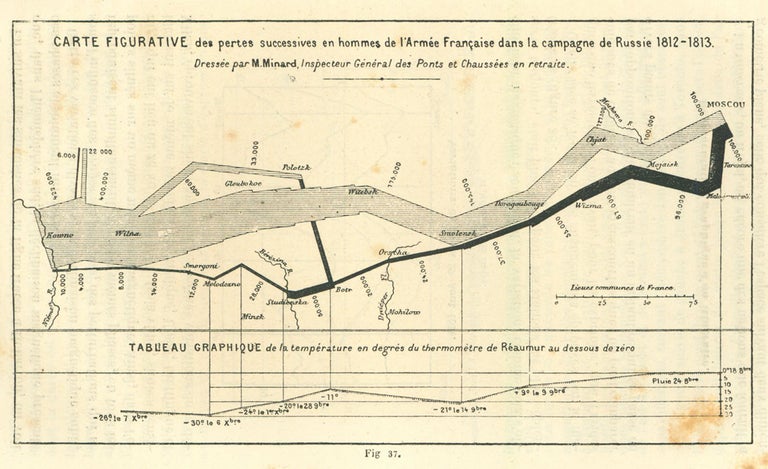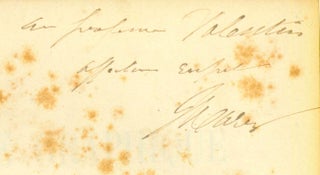La methode graphique dans les sciences experimentales. Inscribed copy
Publisher Information: Paris: Masson, 1878.
Marey, Etienne-Jules (1830-1904). La méthode graphique dans les sciences expérimentales et principalement en physiologie et en médecine. xix, 673, [3, incl. errata]pp. Text illustrations. Paris: G. Masson, [1878]. 237 x 155 mm. Quarter cloth, mottled boards ca. 1878, remains of handwritten paper label on spine, light edgewear, spine a bit faded. Light to moderate foxing, but very good. Presentation copy, inscribed by Marey to Gabriel Gustav Valentin (1810-83) on the half-title: "A Professeur Valentin affection & respet E. J. Marey."
First Edition. Marey pioneered the use of graphical recording in the experimental sciences, using instruments (many of his own invention) to capture and display data impossible to observe with the senses alone, and to record the progression of such data over time. He began by applying graphical recording methods to problems in physiology, using machines to investigate the mechanics of the circulatory, respiratory and muscular systems. After 1868 he turned to the study of human and animal locomotion, and in the 1880s he began using cinematography to record animal motion, making him one of the pioneers in this field. Marey's graphical recording methods, at first looked on askance by the French medical establishment, eventually led to his election to the Académie des Sciences, where he occupied the chair in the medical and surgical section once held by Claude Bernard. In the same year Marey published his La méthode graphique,
"an encyclopedic summary of all of his research and results so far. It began, as did all Marey's publications, with a scrupulous history in which he enumerated his predecessors and described what he had borrowed from each. He then defined the purposes of his inscribing machines and showed how they were able to describe both movement and force as well as to store the information as material for comparison and research. He described the circulatory and locomotion phenomena he had studied, but this time he focused on methods of recording them. He reviewed the function of the mechanical models he had created, and finally he explained the locomotion of humans, horses, birds and insects and showed the devices for registering their movements. 'There is nothing," wrote Marey, "that can escape the methods of analysis at our disposal'" (Braun, p. 40).
An uninscribed copy of Marey's Méthode graphique (together with its 1885 supplement) was sold at the Tufte sale (Christie's Dec. 2, 2010) for $15,000. We are offering the copy that Marey presented to Gabriel Gustav Valentin, professor of physiology at the University of Bern and co-author, with J. E. Purkyne, of a classic paper on ciliary epithelial motion (see Garrison-Morton 602). Dictionary of Scientific Biography. Braun, Picturing Time: The Work of Etienne-Jules Marey, pp. 39-40.
Book Id: 41059Price: $6,000.00


